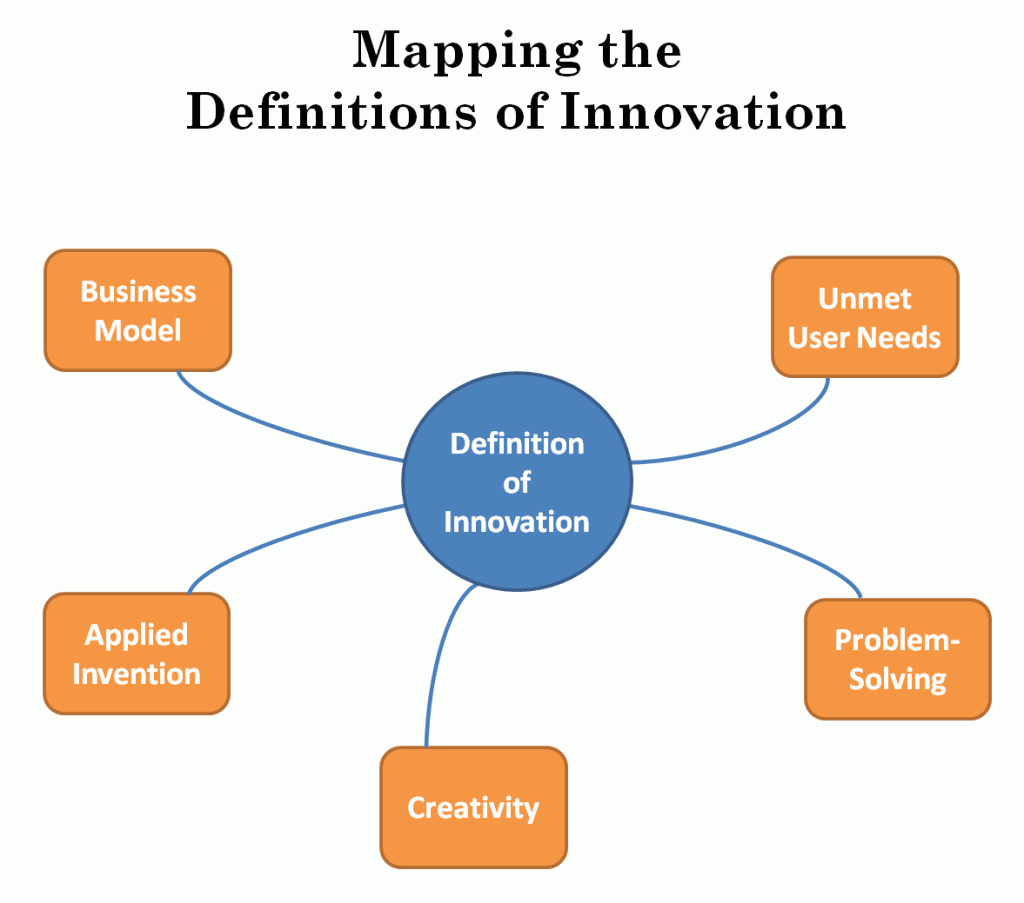
- •Innovation The process by which an idea or invention is translated into a good or service for which people will pay, or something that results from this process.
- •Business Model
- •Applied Invention
- •Creativity
- •In this meaning of innovation, the focus is on addressing issues and challenges. The existing mode of operation has issues, and a new approach is needed.
Innovation The process by which an idea or invention is translated into a good or service for which people will pay, or something that results from this process.
To be called an innovation, an idea must be replicable at an economical cost and must satisfy a specific need. Innovation involves deliberate application of information, imagination, and initiative in deriving greater or different value from resources, and encompasses all processes by which new ideas are generated and converted into useful products. In business, innovation often results from the application of a scientific or technical idea in decreasing the gap between the needs or expectations of the customers and the performance of a company's products. In a social context, innovation is equally important in devising new collaborative methods such as alliance creation, joint venturing, flexible working hours, and in creating buyers' purchasing power through methods such as layaway plans. Innovations are divided into two broad categories: (1) Evolutionary innovations are brought about by numerous incremental advances in technology or processes and are of two types (a) Continuous evolutionary innovations result in an alteration in product characteristics instead of in a new product, and do not require any user-learning or changes in his or her routine. Examples are the multiblade shaving razor, fluoride toothpaste, and laptop computers. (b) Dynamic continuous evolutionary innovations require some user-learning but do not disrupts his or her routine. Examples are fax machines, instant photography, and handheld computers. (2) Revolutionary innovations (also called discontinuous innovations) require a good deal of user-learning, often disrupt his or her routine, and may even require new behavior patterns. Examples are photocopier (xerography) machines, personal computers, and the Internet. Innovation is synonymous with risk-taking and organizations that introduce revolutionary products or technologies take on the greatest risk because they have to create new markets. A less risky innovation strategy is that of the imitator who starts with a new product (usually created by a revolutionary-innovator) having a large and growing demand. The imitator then proceeds to satisfy that demand better with a more effective approach. Examples are IBM with its PC against Apple Computer, Compaq with its cheaper PCs against IBM, and Dell with its still-cheaper clones (sold directly to the customer) against Compaq. Although many innovations are created from inventions, it is possible to innovate without inventing, and to invent without innovating.
Multi-dimensional views
Ever since the invention of innovation the number of definitions of innovation seems to grow even faster than the number of researchers and practitioners in innovation. What is more, the term innovation seems to refer to fundamentally different matters sometimes, which is the case if one colleague calls a new product an innovation while the other two consider an innovation either the process that leads to the new product or the products market diffusion.
Starting with the above mentioned minimal consensus on the elective affinity of the concept of innovation and the concept of the new, we will indeed soon find that new refers not only to time, but also to the object dimension (new compared to what?) and the social dimension (new for whom?)
Innovation as novelty
If we are interested in the object dimension of innovation, then we focus on the added values of certain products, processes or services. Innovation is always expressed by better technological solution accepted by society. Novelty is just a consequence of innovations' practical implementation. Innovation is always novel. But the key parameter of innovation is an added value for the user.
Innovation as change
When examining the time dimension of innovation, we are no longer interested in new objects but rather in new processes (that might also lead to new objects). In this context, innovation refers to transformation, diffusion and ultimately change.
Innovation as advantage
In its social dimension, innovation refers to the creation of new forms of advantage in terms of innovative address management (e.g. the use of preferable new or attractive signs in order to stand out from the crowd) or of the realization of advances.
Sources of innovation
There are several sources of innovation. According to the Peter F. Drucker the general sources of innovations are different changes in industry structure, in market structure, in local and global demographics, in human perception, mood and meaning, in the amount of already available scientific knowledge, etc. Also, internet research, developing of people skills, language development, cultural background, skype, Facebook, etc. In the simplest linear model of innovation the traditionally recognized source is manufacturer innovation. This is where an agent (person or business) innovates in order to sell the innovation. Another source of innovation, only now becoming widely recognized, is end-user innovation. This is where an agent (person or company) develops an innovation for their own (personal or in-house) use because existing products do not meet their needs. MIT economist Eric von Hippel has identified end-user innovation as, by far, the most important and critical in his classic book on the subject, Sources of Innovation.
In addition, the famous robotics engineer Joseph F. Engelberger asserts that innovations require only three things: 1. A recognized need, 2. Competent people with relevant technology, and 3. Financial support. The Kline Chain-linked model of innovation places emphasis on potential market needs as drivers of the innovation process, and describes the complex and often iterative feedback loops between marketing, design, manufacturing, and R&D.

